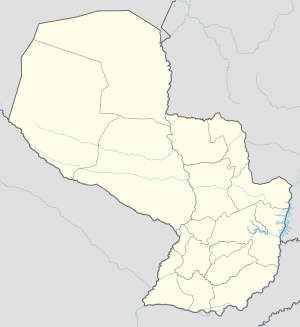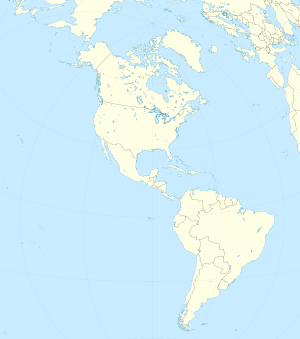318:
290:
257:
531:, built up a horseshoe-shaped defense facing west around the old outpost and gathered under his command four regiments and several minor units that made up the Paraguayan Fifth Division. On January 20, 1933, Nanawa was the subject of a massive Bolivian assault, which stalled after several days of heavy fighting and was eventually beaten back by the Paraguayan garrison. The Bolivian army suffered 2,000 casualties. By March, Nanawa became the headquarters of the Paraguayan III
569:
from Isla Poí to the south flying over hostile territory and landed on an improvised airstrip close to the battle lines. The airstrip had been hastily built during the first
Bolivian offensive. The pilots handed over 1,650 kg of ammunition to the stronghold on the first day of operation. Three Potez 25s were hit by ground fire and forced to make hard landings, but all were eventually recovered and rebuilt.
203:
165:
193:
184:
153:
133:
37:
120:
578:
325:
297:
264:
568:
fighter-bombers being used as transport aircraft resupplied the exhausted
Paraguayan stockpiles by delivering hand grenades and ammunition. The planes were stripped of their rear machine guns in order to use the gunner's cockpit to load 115 kilograms (254 lb) of ammunition. The aircraft departed
543:
The battle began on the 4 July at 9:00 a.m. with the explosion of a large mine just 30 yards short of the main
Paraguayan redoubt, followed by a massive frontal attack. Part of the redoubt was seized by the attackers. The Bolivian army engaged the defenders with artillery and mortar fire, air
563:
The
Bolivians lost one tank to artillery fire, while one of the tankettes was damaged by small-arms fire and the other became stuck in a ditch. Both of them were withdrawn from the front line after this battle, while the crippled tank was eventually blown up by Paraguayan sappers. Four
556:. The Bolivian troops staged a two-pronged assault, one from the north and the other from the south, while a diversionary force established a blocking position in the center. The Paraguayan troops responded with their own artillery fire and
647:
585:
Once the assault was repelled, the
Paraguayans launched an unsuccessful counterattack on 11 July on enemy positions outside the complex, in a wooded area southwest of the Paraguayan outpost of
589:. The second battle of Nanawa was a major turning point in the war, since the Paraguayan army regained the strategic initiative that had belonged to the Bolivians since early 1933.
873:
367:
317:
289:
469:. It was one of the bloodiest battles fought in South America in the 20th century, coming to be labeled as the "South American Verdun" by comparison with the
773:
519:
officer who joined the
Paraguayan army in the 1920s. In December 1932 the Bolivian army took over a number of Paraguayan outposts between Nanawa and the
256:
360:
272:
848:
757:
693:
636:
613:
492:
809:
68:
353:
439:
389:
404:
853:
868:
858:
409:
768:
863:
429:
581:
A Vickers Mark E type B, the same kind of tank employed by the
Bolivian army in their second assault on Nanawa
499:, the Paraguayan headquarters and main water supply point to the northeast, and ultimately reach the city of
560:
armor-piercing rounds. They eventually recovered the fortifications that had been overrun by the
Bolivians.
449:
486:
424:
399:
651:
444:
549:
394:
500:
434:
491:
The battle was the last
Bolivian attempt to capture the heavily fortified stronghold of Nanawa, a
727:
753:
689:
632:
609:
528:
496:
169:
670:
586:
470:
465:
was fought from the 4 to 9 July 1933, between the
Bolivian and Paraguayan armies during the
419:
777:
557:
520:
516:
508:
504:
842:
545:
512:
553:
36:
474:
577:
532:
527:. Realising that a major offensive was looming, the fort's commander, Colonel
495:
in the southern front. By capturing Nanawa the Bolivian army hoped to isolate
157:
62:
824:
811:
83:
70:
524:
466:
377:
28:
565:
202:
164:
138:
511:
for "carob tree forest") had been founded as a small outpost in 1928 by
192:
183:
152:
125:
349:
345:
730:
Historias Olvidadas: Tanques en la Guerra del Chaco
748:Hagedorn, Dan & Antonio Luis Sapienza (1996).
324:
296:
263:
21:
686:The Chaco War: Bolivia and Paraguay, 1932–1935
629:The age of the professional soldier, 1900–2001
361:
8:
606:Blindados Argentinos, de Uruguay y Paraguay
688:. Greenwood Publishing Group, p. 130-132.
368:
354:
346:
18:
576:
597:
304:Second Battle of Nanawa (South America)
874:History of Presidente Hayes Department
714:
712:
710:
666:
664:
752:. Schiffer Publishing Co, pp. 32–33.
744:
742:
7:
750:Aircraft of the Chaco War, 1928–1935
780:by General Fulgencio Yegros Girola
14:
332:Second Battle of Nanawa (America)
604:Sigal Fogliani, Ricardo (1997).
323:
316:
295:
288:
262:
255:
201:
191:
182:
163:
151:
131:
118:
35:
728:Tamaño, Gustavo Adolfo (2008).
631:. Robert L. Scheina. Page 97.
1:
16:1933 battle of the Chaco War
890:
484:
684:Farcau, Bruce W. (1996).
385:
307:Show map of South America
249:
230:
211:
175:
144:
111:
45:
34:
26:
849:Battles of the Chaco War
276:Location within Paraguay
463:Second Battle of Nanawa
22:Second Battle of Nanawa
627:Latin America's Wars:
608:. Ayer y Hoy, p. 145.
582:
550:Carden-Lloyd tankettes
487:First Battle of Nanawa
145:Commanders and leaders
825:23.48750°S 59.76917°W
580:
523:, on the border with
231:Casualties and losses
84:23.48750°S 59.76917°W
830:-23.48750; -59.76917
279:Show map of Paraguay
273:class=notpageimage|
89:-23.48750; -59.76917
821: /
792:Farcau, pp. 135–136
546:Vickers light tanks
335:Show map of America
80: /
776:2011-05-31 at the
770:Batallas de Nanawa
648:Vysokolán, Stephan
583:
245:3 aircraft damaged
103:Paraguayan victory
854:Conflicts in 1933
653:Batalla de Nanawa
458:
457:
344:
343:
226:4 fighter-bombers
107:
106:
41:Map of the battle
881:
869:July 1933 events
859:1933 in Paraguay
836:
835:
833:
832:
831:
826:
822:
819:
818:
817:
814:
802:
799:
793:
790:
784:
783:
766:
760:
746:
737:
736:
725:
719:
716:
705:
702:
696:
682:
676:
675:
668:
659:
658:
645:
639:
625:
619:
618:
602:
471:Battle of Verdun
440:Cañada Strongest
380:
370:
363:
356:
347:
336:
327:
326:
320:
308:
299:
298:
292:
280:
266:
265:
259:
238:1 tank destroyed
206:
205:
196:
195:
187:
186:
168:
167:
156:
155:
137:
135:
134:
124:
122:
121:
95:
94:
92:
91:
90:
85:
81:
78:
77:
76:
73:
47:
46:
39:
19:
889:
888:
884:
883:
882:
880:
879:
878:
864:1933 in Bolivia
839:
838:
829:
827:
823:
820:
815:
812:
810:
808:
807:
805:
800:
796:
791:
787:
781:
778:Wayback Machine
767:
763:
747:
740:
734:
726:
722:
717:
708:
703:
699:
683:
679:
673:
669:
662:
656:
646:
642:
626:
622:
616:
603:
599:
595:
575:
544:strikes, three
541:
521:Pilcomayo River
489:
483:
459:
454:
381:
376:
374:
340:
339:
338:
337:
334:
333:
330:
329:
328:
311:
310:
309:
306:
305:
302:
301:
300:
283:
282:
281:
278:
277:
275:
269:
268:
267:
244:
239:
237:
225:
220:
218:
200:
190:
189:
181:
162:
150:
132:
130:
119:
117:
88:
86:
82:
79:
74:
71:
69:
67:
66:
65:
40:
17:
12:
11:
5:
887:
885:
877:
876:
871:
866:
861:
856:
851:
841:
840:
804:
803:
801:Farcau, p. 134
794:
785:
761:
738:
720:
718:Farcau, p. 133
706:
704:Farcau, p. 132
697:
677:
671:Luis Irrazábal
660:
640:
620:
596:
594:
591:
574:
571:
540:
537:
529:Luis Irrazábal
505:Paraguay River
482:
479:
456:
455:
453:
452:
447:
442:
437:
432:
427:
422:
417:
412:
407:
402:
397:
392:
386:
383:
382:
375:
373:
372:
365:
358:
350:
342:
341:
331:
322:
321:
315:
314:
313:
312:
303:
294:
293:
287:
286:
285:
284:
271:
270:
261:
260:
254:
253:
252:
251:
250:
247:
246:
241:
233:
232:
228:
227:
222:
214:
213:
209:
208:
198:
178:
177:
176:Units involved
173:
172:
170:Luis Irrazábal
160:
147:
146:
142:
141:
128:
114:
113:
109:
108:
105:
104:
101:
97:
96:
61:
59:
55:
54:
51:
43:
42:
32:
31:
24:
23:
15:
13:
10:
9:
6:
4:
3:
2:
886:
875:
872:
870:
867:
865:
862:
860:
857:
855:
852:
850:
847:
846:
844:
837:
834:
798:
795:
789:
786:
779:
775:
772:
771:
765:
762:
759:
758:0-7643-0146-2
755:
751:
745:
743:
739:
732:
731:
724:
721:
715:
713:
711:
707:
701:
698:
695:
694:0-275-95218-5
691:
687:
681:
678:
672:
667:
665:
661:
655:
654:
649:
644:
641:
638:
637:1-57488-452-2
634:
630:
624:
621:
615:
614:987-95832-7-2
611:
607:
601:
598:
592:
590:
588:
579:
572:
570:
567:
561:
559:
555:
554:flamethrowers
551:
547:
538:
536:
534:
530:
526:
522:
518:
517:white Russian
514:
513:Ivan Belaieff
510:
506:
502:
498:
494:
488:
480:
478:
476:
472:
468:
464:
451:
448:
446:
443:
441:
438:
436:
433:
431:
428:
426:
423:
421:
418:
416:
413:
411:
408:
406:
403:
401:
398:
396:
393:
391:
388:
387:
384:
379:
371:
366:
364:
359:
357:
352:
351:
348:
319:
291:
274:
258:
248:
242:
235:
234:
229:
223:
219:3 light tanks
216:
215:
210:
204:
199:
194:
185:
180:
179:
174:
171:
166:
161:
159:
154:
149:
148:
143:
140:
129:
127:
116:
115:
110:
102:
99:
98:
93:
64:
60:
57:
56:
53:4–9 July 1933
52:
49:
48:
44:
38:
33:
30:
25:
20:
806:
797:
788:
782:(in Spanish)
769:
764:
749:
735:(in Spanish)
729:
723:
700:
685:
680:
674:(in Spanish)
657:(in Spanish)
652:
643:
628:
623:
617:(in Spanish)
605:
600:
584:
562:
542:
490:
462:
460:
430:2nd Alihuatá
425:Campo Grande
414:
410:Campo Jordán
405:1st Alihuatá
207:5th Division
197:9th Division
188:4th Division
112:Belligerents
27:Part of the
828: /
475:World War I
450:Villamontes
395:Kilómetro 7
240:2 tankettes
221:2 tankettes
87: /
843:Categories
816:59°46′09″W
813:23°29′15″S
533:Army Corps
507:. Nanawa (
501:Concepción
485:See also:
481:Background
415:2nd Nanawa
400:1st Nanawa
158:Hans Kundt
75:59°46′09″W
72:23°29′15″S
63:Gran Chaco
573:Aftermath
566:Potez 25s
552:and four
525:Argentina
503:, on the
467:Chaco War
445:El Carmen
435:Campo Vía
378:Chaco War
29:Chaco War
774:Archived
733:pp. 4–6
650:(1958).
497:Isla Poí
390:Boquerón
212:Strength
139:Paraguay
58:Location
493:salient
126:Bolivia
756:
692:
635:
612:
587:Gondra
558:7.62mm
548:, two
539:Battle
420:Gondra
136:
123:
100:Result
593:Notes
509:Enxet
236:1,600
224:9,000
217:9,000
754:ISBN
690:ISBN
633:ISBN
610:ISBN
515:, a
461:The
50:Date
473:of
243:500
845::
741:^
709:^
663:^
535:.
477:.
369:e
362:t
355:v
Text is available under the Creative Commons Attribution-ShareAlike License. Additional terms may apply.



